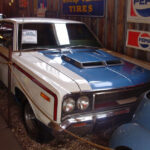Nestled on a verdant hill, overshadowed by the towering skyscrapers of modern Dallas, lies a silent testament to the city’s origins – Pioneer Park Cemetery Dallas. This historic graveyard, established 154 years ago when Dallas was a nascent North Central Texas town, serves as the final resting place for the individuals who laid the groundwork for the metropolis we know today. The weathered headstones, etched with names from a bygone era, call out to passersby, whispering tales of the city’s early pioneers and influential figures. Each interred here played a crucial role in shaping Dallas into the dynamic and cosmopolitan hub it is now. These were individuals who arrived by various means, from horse-drawn wagons to foot, hailing from diverse states and walks of life, all converging on this promising frontier.
These early settlers faced daily struggles to build meaningful lives in what was then a remote outpost. While some moved on, many remained, their lives intrinsically linked to the very spot on the east bank of the Trinity River where John Neely Bryan, the city’s founder, first planted the seeds of Dallas in 1841. This location is now recognizable as the site of the triple underpass, where Elm, Main, and Commerce Streets pass beneath the Union Station Terminal Railroad tracks.
The establishment of Pioneer Park Cemetery Dallas was strategically chosen on an elevated hill in the southwest part of downtown Dallas. This location offered a commanding view of the burgeoning downtown area and the Trinity River to the west. However, the elevation was not primarily for aesthetic purposes; rather, it was a practical decision, given the Trinity River’s propensity to flood before the construction of protective levees. While the panoramic view has since been obscured by towering buildings, the cemetery’s historical significance remains undiminished. Historians suggest that the earliest burials, possibly of two young children, occurred between 1846 and 1849, predating its official designation as a graveyard in 1857. This formal establishment was a collaborative effort between the Masonic and Odd Fellows fraternal organizations. Although the oldest surviving headstones date back to 1853, historian Willie Flowers Carlisle, in his seminal work “History of the Old Cemetery,” documented evidence of even earlier interments. The last burials within Pioneer Park Cemetery Dallas took place between 1921 and 1928, marking the end of an era for this historic site. In the mid-1850s, Dallas was a small community of fewer than 1,000 residents. Life in the 19th century was arduous, and mortality rates were high, with many succumbing to various illnesses and hardships at a young age by modern standards.
Pioneer Park Cemetery Dallas serves as the eternal abode for a remarkable cross-section of early Dallas society. Among those interred are six Dallas Mayors who guided the city’s initial growth, three veterans of the War of 1812 who defended the young nation, and nine heroes of the Texas Revolution who fought for Texan independence. The cemetery also holds the remains of twenty-nine Civil War veterans (one Union and twenty-eight Confederate), fourteen Peters Colonists who were instrumental in the region’s early settlement, and five members of the La Reunion French Colony, an ambitious but short-lived utopian community near Dallas. Four Confederate Colonels, two County Judges, two District Judges, and two historically significant women also rest here, alongside a State Senator, a Lieutenant Governor, and numerous other city and county officials from Dallas’s formative years. Early doctors, lawyers, clergymen, merchants, fallen law enforcement officers and firemen, engineers, and pioneering business leaders are also part of the cemetery’s population, as are countless mothers and children, representing the full spectrum of early Dallas life. The epitaphs and artistic details adorning the monuments serve as poignant expressions of grief and remembrance, reflecting the profound emotions of those left behind. These enduring markers, having weathered the passage of time, the elements, and occasional vandalism, stand as a tangible and irreplaceable link to Dallas’s rich and storied past, inviting us to remember and reflect upon the lives that shaped the city we know today.

